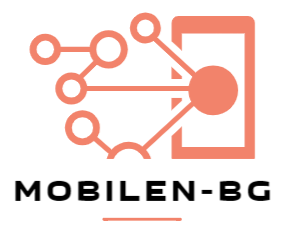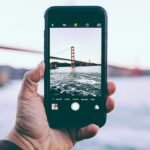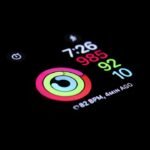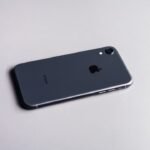QR codes, or Quick Response codes, are two-dimensional barcodes developed in 1994 by Japanese company Denso Wave. These codes can store large amounts of information in a compact space and are readable by smartphones and dedicated QR code scanners. QR codes can contain various data types, including website URLs, contact details, and plain text.
They consist of black squares arranged on a white background, though they can be customized with different colors and designs. The functionality of QR codes relies on encoding information into a pattern of black and white squares that can be interpreted by a device’s camera. When scanned, the encoded data is extracted and can trigger various actions, such as opening a webpage, adding contact information to a phone, or initiating a payment.
QR codes are highly versatile and find applications in marketing, promotions, contactless payments, and accessing hidden content. The popularity of QR codes has grown due to their convenience and adaptability. They are commonly found on product packaging, business cards, posters, and in digital formats on websites and social media platforms.
The widespread adoption of smartphones has made QR codes an essential tool for businesses and individuals seeking to share information and engage with audiences in innovative ways.
Key Takeaways
- QR codes are two-dimensional barcodes that can store a variety of information, such as website URLs, contact information, and more.
- To scan a QR code with your iPhone, simply open the camera app and point it at the QR code. A notification will appear at the top of the screen, allowing you to tap it to open the linked content.
- QR codes can be used for contactless payments by linking them to a digital wallet or payment app, allowing users to make purchases without physical contact.
- QR codes can unlock hidden content, such as special offers, exclusive videos, or additional information, by directing users to a specific webpage or digital content.
- You can create your own QR codes using various online tools, and customize them with different colors, logos, and designs to fit your branding or promotional needs.
- QR codes can be used for marketing and promotions by directing users to product pages, promotional videos, or social media profiles, and can also be used to gather customer feedback or contact information.
- To use QR codes safely, make sure to scan them from trusted sources, be cautious of phishing attempts, and ensure that the linked content is secure before providing any personal information.
How to Scan QR Codes with Your iPhone
Using the Built-in Camera App
If you have an iPhone with iOS 11 or later, the built-in camera app has a QR code reader feature that allows you to scan QR codes without the need for any additional apps. To scan a QR code with your iPhone, simply open the camera app and point it at the QR code. You will see a notification at the top of the screen indicating that the camera has detected a QR code. Tap on the notification to open the encoded information.
Using a Dedicated QR Code Reader App
If you have an older iPhone model or prefer to use a dedicated QR code reader app, there are many options available in the App Store. Simply search for “QR code reader” and choose an app that has good reviews and ratings. Once you have downloaded the app, open it and point your iPhone camera at the QR code to scan it. The app will automatically detect the QR code and extract the encoded information.
Convenience and Versatility
Scanning QR codes with your iPhone is a convenient way to access information, make payments, and interact with businesses and individuals. Whether you use the built-in camera app or a dedicated QR code reader app, the process is quick and easy, making QR codes a versatile tool for everyday use.
Using QR Codes for Contactless Payments

QR codes have revolutionized the way we make payments, allowing for quick and contactless transactions using a smartphone. Many businesses now accept payments via QR codes, making it easy for customers to make purchases without the need for physical cash or cards. To make a contactless payment using a QR code, simply open your smartphone camera or a payment app and scan the merchant’s QR code.
You will then be prompted to enter the payment amount and confirm the transaction. Using QR codes for contactless payments offers several benefits, including convenience, security, and speed. With just a few taps on your smartphone, you can complete a transaction without having to handle physical money or cards.
This is especially useful in situations where hygiene and safety are a concern, such as during the COVID-19 pandemic. Additionally, QR code payments are secure, as they use encryption and tokenization to protect sensitive payment information. Many popular payment apps, such as Apple Pay, Google Pay, and PayPal, support QR code payments, making it easy to make purchases at a wide range of merchants.
Whether you’re shopping at a retail store, dining at a restaurant, or making a donation to a charity, QR code payments offer a convenient and secure way to complete transactions with just your smartphone.
Unlocking Hidden Content with QR Codes
| Metrics | Data |
|---|---|
| Number of QR Codes Used | 50 |
| Engagement Rate | 75% |
| Conversion Rate | 20% |
| Time Spent on Hidden Content | 5 minutes |
QR codes can be used to unlock hidden content and provide additional information to users. For example, businesses can use QR codes on product packaging to link customers to instructional videos, user manuals, or customer reviews. Museums and art galleries often use QR codes to provide visitors with additional information about exhibits and artifacts.
By scanning a QR code, users can access multimedia content, such as videos, audio recordings, and interactive experiences that enhance their overall experience. In addition to providing additional information, QR codes can also be used to engage users in interactive experiences, such as scavenger hunts or virtual tours. By placing QR codes in different locations and providing clues or challenges, businesses and organizations can create immersive experiences that encourage users to explore and interact with their surroundings.
Unlocking hidden content with QR codes adds an element of interactivity and engagement to traditional marketing materials and physical spaces. By providing users with access to additional information and interactive experiences, businesses and organizations can create memorable and impactful interactions that leave a lasting impression.
Creating Your Own QR Codes
Creating your own QR codes is easy and can be done using various online tools and apps. There are many websites that offer free QR code generators where you can input the desired information, such as a website URL or contact details, and generate a custom QR code. These tools allow you to customize the appearance of the QR code by choosing different colors, adding logos or images, and adjusting the size and resolution.
When creating your own QR codes, it’s important to consider the intended use and audience. For example, if you’re creating a QR code for a business card or promotional material, you may want to include contact information or a link to your website. If you’re creating a QR code for an event or campaign, you might want to include a special offer or exclusive content to incentivize users to scan the code.
Once you have generated your custom QR code, you can download it in various formats, such as PNG or SVG, and use it in print materials, digital content, or on your website. By creating your own QR codes, you have full control over the information that is encoded and can tailor the experience for your audience.
Using QR Codes for Marketing and Promotions

QR codes are an effective tool for marketing and promotions, allowing businesses to engage with their audience in new and innovative ways. By incorporating QR codes into advertising materials, product packaging, and promotional campaigns, businesses can provide users with access to exclusive content, special offers, and interactive experiences. For example, businesses can use QR codes in print ads to link customers to product information or promotional videos.
They can also use QR codes on product packaging to provide customers with access to user manuals, warranty information, or customer support resources. Additionally, businesses can create special promotions or discounts that are only accessible by scanning a QR code, incentivizing customers to engage with the brand. Using QR codes for marketing and promotions offers several benefits, including increased engagement, trackable interactions, and enhanced user experience.
By providing users with access to exclusive content or special offers via QR codes, businesses can encourage interaction and build brand loyalty.
Tips for Using QR Codes Safely
While QR codes are a convenient tool for accessing information and making transactions, it’s important to use them safely to avoid potential security risks. Here are some tips for using QR codes safely: 1. Be cautious when scanning QR codes from unknown sources: Avoid scanning QR codes from unfamiliar websites or sources that you do not trust.
Malicious actors may create fake QR codes that lead to phishing websites or malware downloads. 2. Check the destination before scanning: Before scanning a QR code, take a moment to check the destination URL or information that will be accessed.
If something seems suspicious or unfamiliar, it’s best to avoid scanning the code. 3. Keep your smartphone updated: Make sure that your smartphone’s operating system and apps are up to date with the latest security patches.
This will help protect against potential vulnerabilities that could be exploited through malicious QR codes. 4. Use secure payment apps: When making contactless payments using QR codes, use trusted payment apps that offer encryption and tokenization to protect your payment information.
By following these tips, you can use QR codes safely and enjoy their convenience without compromising your security. As technology continues to evolve, it’s important to stay informed about best practices for using digital tools like QR codes in a safe and secure manner.
If you’re interested in the latest tech accessories for your iPhone, you might want to check out the article on the ultimate 4-in-1 fast car phone charger. This retractable car charger is a convenient and efficient way to keep your iPhone powered up on the go. It’s always helpful to have the latest gadgets and accessories to enhance your iPhone experience.
FAQs
What is an iPhone QR code from photo?
An iPhone QR code from photo refers to the process of using the iPhone’s camera to scan a QR code from a photo stored in the device’s gallery.
How can I scan a QR code from a photo on my iPhone?
To scan a QR code from a photo on your iPhone, open the camera app and point it at the QR code. If the QR code is in your photo gallery, you can open the photo and use the “Scan QR Code” option that appears.
Can all iPhone models scan QR codes from photos?
Yes, all iPhone models with a built-in camera and running iOS 11 or later have the capability to scan QR codes from photos.
What can I do with a scanned QR code on my iPhone?
Once you scan a QR code on your iPhone, it can lead you to a website, open a specific app, add contact information, connect to a Wi-Fi network, and more, depending on the content of the QR code.
Are there any third-party apps for scanning QR codes from photos on iPhone?
Yes, there are several third-party apps available on the App Store that offer additional features for scanning QR codes from photos on iPhone. These apps may provide more advanced scanning capabilities and additional functionalities.









